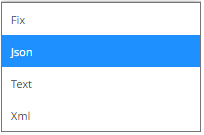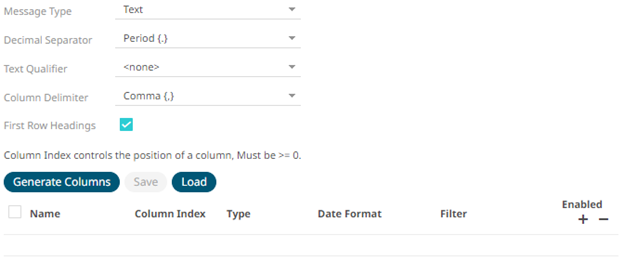Defining the Message Type in Data Sources
Message types specify the format of the data within the message.
Steps:
1. Select the Message Type:

· FIX

· JSON
If JSON is selected, enter the Record Path which allows the identification of multiple records within the JSON document (e.g., myroot.items.item).

· Text
If Text has been selected, confirm the Decimal Separator, Text Qualifier, Column Delimiter, and if the first row of the message includes column headings.

· XML

2. Define or set the columns that represent the sections of the message.
|
Property |
Description |
|
Name |
The column name of the source schema. |
|
Fix Tag/JsonPath/Text Column Index/XPath |
The Fix Tag/JsonPath/Text Column Index/XPath of the source schema. |
|
Type |
The data type of the column. Can be a Text, Numeric, or Time |
|
Date Format |
The format when the data type is Time. |
|
Enabled |
Determines whether the message field should be processed. |
|
NOTE |
To parse and format times with higher than millisecond precision, the format string needs to end with a period followed by sequence of upper case S. There can be no additional characters following them. For example: yyyy-MM-dd HH:mm:ss.SSSSSS
|
To
delete a column, check its  or all the column
entries, check the topmost
or all the column
entries, check the topmost  , then click
, then click  .
.


